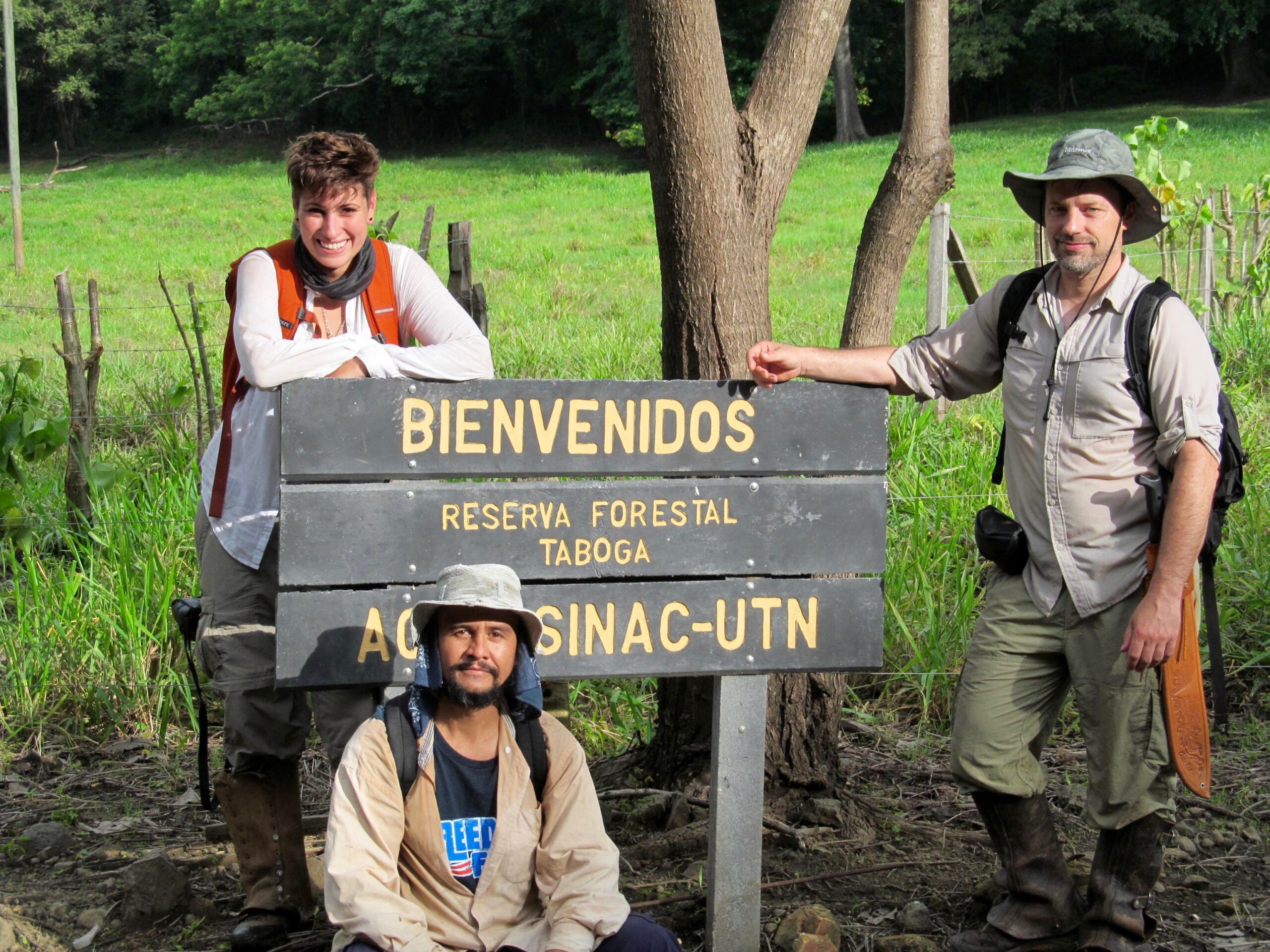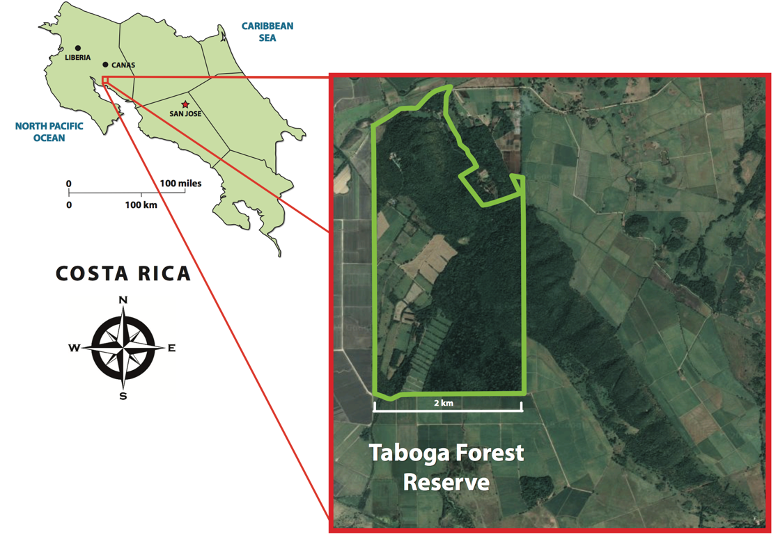Capuchinos de Taboga is located in the Reserva Forestal Taboga in the Guanacaste Region of Costa Rica. The reserve consists of 2.97 sq. km. of protected tropical dry forest and sits within an experimental farm of the UTN Guanacaste campus that also boasts palm forests, mixed pasture, sugarcane fields, and even tilapia ponds.
We initiated the project in June 2017 with 2 Costa Rican assistants (and capuchin monkey experts) Alexander Fuentes and Juan Carlos Ordóñez. Since then our project has expanded. We have a growing team of local and international assistants, field managers, and students that live and work at the field station. In addition, we have a number of visiting scholars, scientists, and collaborators that visit and contribute to the growing research at Taboga. We have now renovated four houses complete with fiber optic wifi, solar powered water heater, and a hormone laboratory.

The Reserva Forestal Taboga is home to a diversity of wildlife from big cats to small arthropods. At Taboga, we have 2 of the 4 primate species endemic to Costa Rica: white-faced capuchin monkeys (Cebus imitator) and howler monkeys (Alouatta palliata). For us, it is the capuchin monkeys that take center stage. Taboga is home to one of the largest densities of capuchin monkeys in Costa Rica. While we have identified over 14 groups, our team focuses on studying 4 groups: Mesas, Palmas, Tenori and Escameka.
